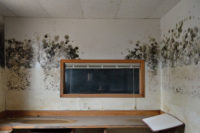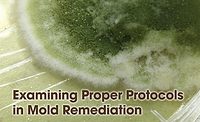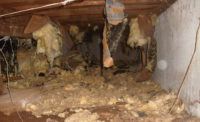Restorer’s Perspective: Becoming a Trusted Mold Remediation Authority – For All Items






If you’re in the restoration industry like our team is, you know how tough it can be to remove mold and mildew from soft items, from furniture upholstery to stuffed animals. Carpeting poses a particular problem because of its size, depth of fibers and attachment to the floor. The following is a summary of the cleaning methods that have helped us build our brand and become a trusted household name in mold remediation – for all items.
The Challenges of Mold Removal
Mold is an organic substance that takes root in carpet and won’t easily let go. Black mold, in particular, can be so pervasive and damaging that insurance companies will suggest homeowners tear out their carpeting rather than remediate the damage. When you consider that 90% of our remediation jobs are related to mold and mildew, you can imagine the thousands of dollars lost due to unrepairable water damage.
Common signs of mold and mildew in your carpet, including musty smell and discoloration, can begin to show up soon after a flood or as long as 6 months after the incident. In our line of work, we often encounter vacation homes along the Oregon Coast that have been flooded and unattended for long periods of time, allowing the mold to work into the carpet, deteriorating floor coverings, undermining the home’s structural integrity and creating unpleasant odors.
The sooner we can catch a mold infestation, the easier removing contaminants and remediating damage will be. We like to save as much as we can, but doing so relies partly on our clients calling us at the first sign of mold development, or as soon as they experience a flood so we can properly dry out the home and prevent the growth of mildew before it starts.
Our Mold Removal Methods
For us, the Esporta ES-3300 wash system is our contents cleaning solution. The wash system is computer-controlled, allowing our team to adjust washing parameters including water temperature, water levels, detergent type, wash rotational speeds, wait states, drum rotation and flush and drain systems. Every aspect of washing and drying can be programmed to suit each specific item, creating the cleanest possible product with zero damage.
For mold-infected items like couch cushions, our team removes the cover and runs it through the system, replacing the damaged foam inside, for a like-new, mold-free glow.
Carpets pose a challenge due to their size. Fitting an area rug into our wash system is usually not an option and spot treatments can often leave behind bleach spots that deface valued carpet.
So how do we get the job done?
One of the ways in which we are able to accurately treat mold is by classifying each type properly. Mold can only be treated the right way when we are aware of the type of mold requiring treatment. At Paul Davis Restoration of Greater Portland, we hire a professional hygienist who utilizes specialized equipment to determine the standard levels of mold spores that reside in the air naturally and cross reference them with the mold spore levels in the affected areas in order to determine the levels that cause different types. Once determined, we choose the right method for mold removal for each type of contamination.
Types of Carpet Mold
Our hygienist helps us to identify the various types of carpet mold and the best ways to treat them. In extreme flooding conditions, mold may begin to grow visibly on the surface of carpets. In order to prevent extreme mold growth in flood-damaged carpet, it must generally be treated within 24-48 hours before deep growth sets in and ruins the piece. However, in most cases, mold and mildew this extreme are rare. Instead, the following types of contamination show up:
- On carpeting: Discoloration or odor on or emitting from damaged area.
- Wet carpet padding: If padding beneath the carpet is wet or moist from condensation, both the padding and the carpet itself are at risk for mold growth. Often, replacing the carpet padding can take care of the issue.
- Basement carpets: Carpeting in basements is often at risk for the growth of mold and mildew. Humidity in the air can cause spores to take root in carpet, causing slow and steady growth that reduces indoor air quality and results in a “musty” odor.
If a carpet has not been compromised by heavy water damage, but is showing other signs of mold and mildew, our first action is always to take samples and have them tested to ensure that we understand the right process for treating each specific situation.
Mold and mildew are insidious threats to carpeting. However, there are always options. While not all carpets can be salvaged, the above tricks of the trade can help you master the mildew and maintain your customers’ valued possessions through a water-related crisis.
Note:
“Restorer’s Perspective” is an occasional feature highlighting how a company is flourishing in a particular area of restoration and/or remediation. If you have a success story you’d like to share with the industry, e-mail R&R Editor Eric Fish at fishe@bnpmedia.com.
Looking for a reprint of this article?
From high-res PDFs to custom plaques, order your copy today!








